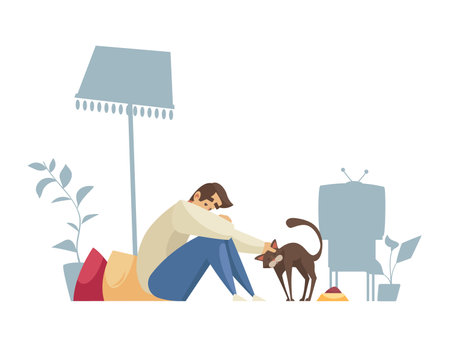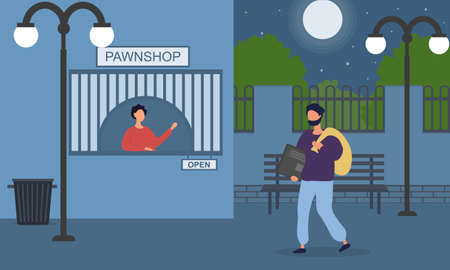Understanding Why Your Dog Is Restless at Night
If your pup is pacing the hallway or whining by your bedside when the moon is high, you’re not alone. Many dog owners across America find themselves bleary-eyed in the morning, wondering why their furry companion just can’t seem to settle down at night. Before you start looking for solutions, it’s important to understand what might be causing your dog’s nighttime restlessness. Common culprits include anxiety—perhaps due to thunderstorms, fireworks, or even separation from you. Sometimes, a dog has simply stored up too much energy from a lazy day indoors and needs an outlet before winding down. Environmental changes, like moving to a new home or adding a new pet to the family, can also leave your pup feeling unsettled after dark. By tuning in to these root causes, you’ll be better equipped to help your four-legged friend get the peaceful sleep they—and you—deserve.
Establishing a Consistent Bedtime Routine
Just like us humans, dogs thrive on consistency and routine, especially when it comes to winding down at the end of the day. Setting a predictable evening routine can help signal to your furry friend that it’s time to relax and prepare for sleep. When your dog knows what to expect each night, their anxiety levels drop, making them less likely to become restless or disruptive when you’re ready for bed.
Why Routines Matter
A consistent bedtime routine helps regulate your dog’s internal clock. Dogs are creatures of habit—they feel safest and most secure when their days have structure. This predictability reduces nighttime restlessness and supports overall better sleep quality for both you and your pet.
Sample Bedtime Routine for Your Dog
| Time | Activity |
|---|---|
| 7:00 PM | Evening Walk (gentle stroll, potty break) |
| 7:30 PM | Calm Play or Gentle Cuddling |
| 8:00 PM | Offer Last Meal or Snack (if needed) |
| 8:30 PM | Create a Calm Environment (dim lights, soothing music) |
| 9:00 PM | Settle into Bed with Comfort Item (favorite blanket or toy) |
Tips for Success
- Stick to similar times each night, even on weekends.
- Avoid high-energy games before bed—opt for gentle activities instead.
- Use verbal cues like “bedtime” or “settle down” so your dog associates these words with sleep.
If you live in a lively household like mine—with several pets bustling around—a set routine gives every animal a sense of order and peace. Over time, your dog will start to wind down naturally as the routine cues begin. This means more restful nights for everyone under your roof!

3. Physical Exercise and Mental Enrichment
When your pup seems to have endless energy at bedtime, it’s often because they haven’t had enough activity during the day. Just like kids who need time outside to run and play before winding down, dogs thrive on regular exercise and brain-stimulating activities. Prioritizing physical exercise is essential—think brisk morning walks through the neighborhood, a game of fetch in the backyard, or even a hike if you’re lucky enough to live near some scenic trails. These daily adventures don’t just tire out your dog physically—they also provide valuable bonding time for you both.
But don’t forget about mental enrichment! Dogs are smart cookies, and they crave challenges that engage their minds. Interactive toys like treat-dispensing puzzles or snuffle mats can keep them entertained while encouraging problem-solving skills. You can also rotate their toys every few days to keep things fresh and exciting—just like how we enjoy a new book or TV show. Even basic obedience training sessions with positive reinforcement can work wonders for burning off mental steam.
By weaving in both physical play and mental stimulation throughout the day, you’ll help your dog use up that extra energy in healthy ways. This not only leads to a calmer pup come bedtime but also helps reduce unwanted nighttime behaviors such as barking, restlessness, or pacing around the house. When their body and mind are satisfied, your furry friend is much more likely to settle in for a peaceful night’s sleep—so you both wake up ready for another day of adventures together.
4. Creating a Comfortable and Safe Sleeping Environment
If your dog is tossing and turning through the night, their sleeping environment may need some tweaking. Just like us, pups crave a cozy and secure spot to rest. Setting up an inviting sleep zone can make all the difference when it comes to calming your restless dog at bedtime. Here’s how you can create the ultimate doggy sleep sanctuary:
Choose the Right Bed
Every dog has their own preferred way to snooze—some love to curl up, others sprawl out. The right bed offers both comfort and support, helping ease anxiety and joint pain, especially for older dogs. Consider these options:
| Bed Type | Best For | Features |
|---|---|---|
| Orthopedic Memory Foam | Senior dogs, large breeds | Cushions joints, supports body weight |
| Donut or Bolster Beds | Anxious or cuddly dogs | Raised edges offer security, perfect for curling up |
| Crate Pads/Mats | Dogs who sleep in crates | Fits snugly in crate, easy to clean |
| Cooling or Heating Beds | Dogs sensitive to temperature changes | Keeps pups comfy year-round |
Add Calming Scents and Sounds
Scent is powerful for our canine friends! Try using a lavender-infused spray made just for pets or set up an essential oil diffuser with dog-safe oils (never use human-grade oils without checking if they’re safe). Soft music or white noise machines can also help mask household sounds that might disturb your pup’s sleep.
Create the Right Lighting Ambiance
Avoid harsh overhead lights when it’s time to wind down. Instead, opt for dimmable lamps or soft nightlights if your dog feels uneasy in complete darkness. Blackout curtains can keep out streetlights and early morning sun that could interrupt those precious Zzz’s.
Tips for a Cozy Nighttime Setup:
- Location matters: Place the bed in a quiet corner away from drafts, busy hallways, or loud electronics.
- Add familiar items: A favorite blanket or plush toy can bring comfort and a sense of security.
- Keep it clean: Wash bedding regularly to prevent odors and allergens.
- Safety first: Make sure there are no loose cords or choking hazards nearby.
- If crate training: Covering part of the crate with a light blanket creates a den-like retreat.
A thoughtfully arranged sleeping space goes a long way toward helping your dog settle down for peaceful nights—and means more restful sleep for both of you!
5. Calming Techniques and Natural Remedies
When your dog struggles to settle down at night, sometimes the right calming techniques and natural remedies can make all the difference. Creating a peaceful nighttime environment starts with understanding what helps your pup feel secure and relaxed. Here are some tried-and-true methods many pet parents in America use to help their dogs get a better night’s rest.
Gentle Music for Soothing Sounds
Just like humans, dogs often respond positively to soothing music. Playing soft, classical tunes or specially designed dog relaxation playlists can drown out distracting noises from the neighborhood or household. Many American families find that leaving gentle music on in the background helps their pups unwind and drift off more easily.
Calming Dog Chews
If your furry friend is restless, consider offering a calming dog chew made from natural ingredients like chamomile or L-theanine. These treats are formulated to promote relaxation without making your dog drowsy or sluggish. Always choose chews specifically labeled as safe for dogs, and check with your vet if you’re unsure about any new supplement.
Dog-Safe Essential Oils
Aromatherapy isn’t just for people! Some essential oils, like lavender and chamomile, can be safely used around dogs to create a calm atmosphere. Try using a pet-safe diffuser in your dog’s sleeping area, but remember—never apply essential oils directly to your dog’s fur or skin, and always use oils that are certified safe for pets.
Additional Tips for a Restful Night
Sometimes simple actions—like dimming the lights, offering a favorite blanket, or providing a cozy crate—can reinforce bedtime routines and signal to your pup that it’s time to settle down. Incorporate these calming techniques into your nightly routine and observe which ones work best for your unique companion.
When to Seek Professional Advice
If your dog remains restless despite trying these natural remedies, it might be time to consult your veterinarian. Persistent nighttime anxiety could signal an underlying health issue or behavioral concern that requires expert attention. Every dog is different, so finding the right combination of soothing methods may take some patience—but with love and consistency, you’ll help your four-legged friend enjoy sweet dreams by your side.
6. When to Seek Professional Help
Sometimes, despite your best efforts and the coziest bedtime routines, your dog’s nighttime restlessness might not improve—or could even get worse. This is when it’s essential to recognize signs that your pup needs more than a calming walk or an extra snuggle session on the porch swing. If your dog is pacing excessively, whining, panting without reason, or seems unable to settle night after night, these behaviors can point to underlying health or behavioral issues that require expert attention.
Recognizing Concerning Signs
Watch for sudden changes in sleep habits, increased anxiety at night, vocalization, accidents in the house, or signs of pain like limping or reluctance to move. If your dog seems unusually clingy or avoids their bed altogether, these may be red flags. Sometimes, restless nights are linked to age-related problems like canine cognitive dysfunction (similar to dementia in humans), arthritis, or even undiagnosed medical conditions such as urinary tract infections or digestive issues.
When a Vet Visit is Needed
If your fur buddy shows physical symptoms—loss of appetite, vomiting, diarrhea, excessive drooling, or visible discomfort—it’s time to call your veterinarian. Even if the symptoms seem minor, early intervention can make a world of difference for your pet’s comfort and health. Your vet can perform a thorough checkup and suggest treatments or medications tailored to your dog’s needs.
Consulting a Professional Trainer
If you suspect your dog’s restlessness stems from anxiety, fearfulness, or learned behaviors rather than medical issues, consulting with a certified dog trainer or behaviorist can provide practical solutions. Trainers experienced in positive reinforcement techniques can help develop new routines and coping strategies so both you and your furry friend can look forward to peaceful nights again.
Remember—reaching out for professional help isn’t just about solving a problem; it’s about ensuring your four-legged family member enjoys sweet dreams under the stars right alongside you.


